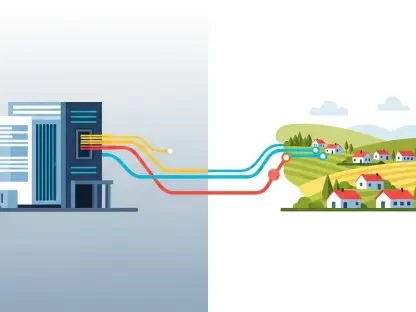In an era where digital access underpins nearly every aspect of daily life, from education to employment, the proposed merger between Charter Communications and Cox Communications stands as a pivotal moment for the American telecommunications industry. With millions still grappling with inadequate internet service, particularly in rural and underserved regions, this strategic consolidation offers a promising pathway to address persistent connectivity gaps. The urgency to bridge the digital divide has never been clearer, as remote work, online learning, and telehealth become staples of modern society. Beyond merely combining two major broadband and cable providers, this merger represents a bold step toward enhancing consumer welfare, fostering competition, and adapting to a rapidly shifting market landscape. This article delves into the multifaceted reasons why uniting Charter and Cox is not just a corporate maneuver, but a critical move to ensure reliable, affordable internet access for all Americans, while navigating the legal and competitive challenges that accompany such a significant industry shift.
Bolstering Consumer Access
The primary argument for the Charter-Cox merger centers on its potential to significantly improve consumer access to high-speed internet, a resource that remains out of reach for approximately 20 million U.S. households. Many of these households are in rural or economically disadvantaged areas where the cost of infrastructure deployment has historically deterred investment. By merging, Charter and Cox can pool their financial and operational resources to tackle these challenges head-on. This means not only faster deployment of broadband services but also the possibility of more affordable pricing structures for end users. The combined entity would have the capacity to prioritize fiber upgrades, which are essential for delivering the high-speed connections demanded by today’s digital economy. Such advancements could transform lives by enabling access to critical services like online education and remote healthcare, directly addressing inequities that have persisted for far too long in the nation’s connectivity landscape.
Moreover, the merger’s focus on consumer welfare extends beyond just expanding coverage to improving service quality and reliability. In areas where internet access exists but is plagued by slow speeds or frequent outages, the enhanced capabilities of a unified Charter-Cox could make a tangible difference. Imagine students in remote communities no longer struggling to join virtual classrooms, or small business owners able to compete on a level playing field with urban counterparts. The operational efficiencies gained from this merger would allow for significant investments in network resilience, ensuring that connectivity isn’t just available, but dependable. This isn’t merely about meeting current needs; it’s about future-proofing infrastructure to handle the growing data demands of tomorrow. By prioritizing consumer needs over corporate silos, the merger positions itself as a solution to one of the most pressing social and economic issues facing America today, setting a precedent for how industry consolidations can serve the greater good.
Dispelling Competition Concerns
A frequent critique of the Charter-Cox merger is the fear that it will stifle competition and lead to higher prices for consumers, but this concern overlooks a crucial reality about the companies’ operations. Charter serves customers across 41 states, predominantly in urban and suburban markets, while Cox operates in distinct regions such as Arizona, Kansas, and Las Vegas. Their geographic separation means that the merger does not eliminate direct competition between the two in most areas. Instead, it creates a more formidable player capable of challenging larger national broadband providers and emerging wireless and satellite services. Far from reducing competitive pressure, this consolidation could invigorate the market by enabling the merged entity to offer better services and pricing, countering the dominance of industry giants. This broader competitive dynamic is essential in an era where consumer choice increasingly spans beyond traditional cable to diverse digital platforms.
Additionally, the competitive landscape of telecommunications today is far more complex than a simple count of providers in a given area. The rise of streaming services, fixed wireless access, and 5G networks means that consumers have more options than ever before, even in regions dominated by a single cable provider. A merged Charter-Cox entity, with a customer base exceeding 37 million, would gain the scale necessary to innovate and compete against these alternative technologies. This isn’t about creating a monopoly but about ensuring survival in a market where smaller players risk being outpaced by tech-driven disruptors. The merger would empower the combined company to invest in cutting-edge solutions, ultimately benefiting consumers through enhanced service offerings. By reframing the competition debate to focus on national and technological rivalry rather than local overlap, the merger reveals itself as a strategic necessity for maintaining a vibrant, consumer-friendly market environment.
Navigating Market Shifts
The telecommunications industry is undergoing a profound transformation, with traditional cable television losing ground to modern alternatives, a trend that underscores the need for the Charter-Cox merger. Subscriber numbers for cable services have plummeted from nearly 99 million in 2016 to under 69 million in recent data, reflecting a clear shift toward streaming platforms and wireless solutions. For legacy providers like Charter and Cox, adapting to this reality requires substantial investment in new technologies such as fiber-optic networks and 5G integration. A merger offers the financial muscle to make these transitions feasible, ensuring that the companies remain relevant in a market increasingly defined by digital innovation. Without such a strategic move, the risk of falling behind competitors who have already embraced these shifts becomes all too real, potentially leaving millions of customers with outdated services.
Furthermore, the necessity for scale in this digital age cannot be overstated, as it directly impacts the ability to deliver on consumer expectations for speed, coverage, and reliability. A unified Charter-Cox would have the resources to undertake large-scale infrastructure projects that smaller, fragmented providers simply cannot afford. This includes expanding high-speed internet to underserved regions and upgrading existing networks to handle the exponential growth in data usage. The result would be a more connected America, where economic and social opportunities are not limited by geography or access to technology. In a time when connectivity drives progress in nearly every sector, from education to commerce, achieving this scale through a merger is not merely advantageous but imperative. The ability to adapt to market evolution through consolidation ensures that Charter and Cox can lead rather than follow in shaping the future of telecommunications.
Legal and Regulatory Viability
From a legal perspective, the Charter-Cox merger appears well-positioned to withstand scrutiny under current antitrust frameworks, which prioritize evidence of actual harm over speculative fears. Established judicial precedents emphasize that market share alone is not sufficient grounds to block a merger; regulators must demonstrate concrete negative impacts on competition. Given the distinct geographic footprints of Charter and Cox, the likelihood of direct competitive overlap is minimal, weakening arguments against the merger. Instead, the focus should be on the consumer benefits, such as expanded broadband access and technological innovation, which align with the core objectives of antitrust law. This legal grounding suggests that the merger stands a strong chance of approval, provided it continues to emphasize its pro-consumer outcomes over mere corporate growth.
Equally important is the regulatory climate, which has shown increasing skepticism toward blocking mergers based on hypothetical risks rather than proven detriments. The Charter-Cox merger fits within this trend, as it promises tangible advantages like closing the digital divide and enhancing service quality without clear evidence of competitive harm. Regulatory bodies are encouraged to consider the dynamic nature of the telecommunications market, where competition extends beyond traditional providers to include wireless and streaming alternatives. By focusing on these broader market realities, the merger can be seen as a step toward fostering innovation and access, rather than restricting choice. The legal and regulatory arguments surrounding this consolidation highlight a critical opportunity to balance industry growth with consumer protection, ensuring that the path forward prioritizes connectivity as a fundamental right in the modern era.
Paving the Way Forward
Reflecting on the discussions surrounding the Charter-Cox merger, it becomes evident that this consolidation tackles some of the most pressing challenges in American telecommunications. The commitment to consumer welfare through expanded broadband access addresses a longstanding inequity that has left millions disconnected. Efforts to counter competition concerns prove that strategic mergers can enhance, rather than diminish, market dynamics. Adapting to the decline of traditional cable and the rise of digital alternatives underscores the foresight embedded in this union. Legally, the merger navigates complex frameworks with a focus on proven benefits over speculative fears. Moving forward, stakeholders should advocate for streamlined regulatory processes that prioritize consumer outcomes, ensuring similar initiatives face fewer hurdles. Additionally, continuous monitoring of service quality and pricing post-merger will be crucial to validate the promised benefits, setting a model for how industry consolidations can drive connectivity and innovation hand in hand.









